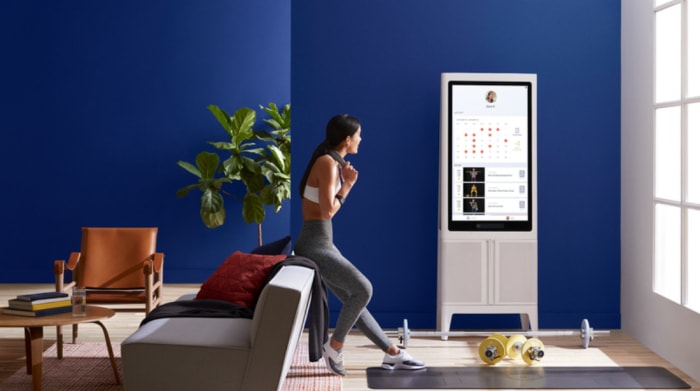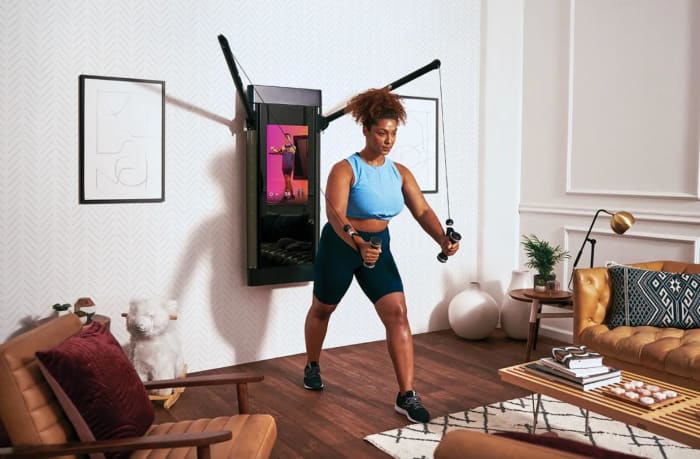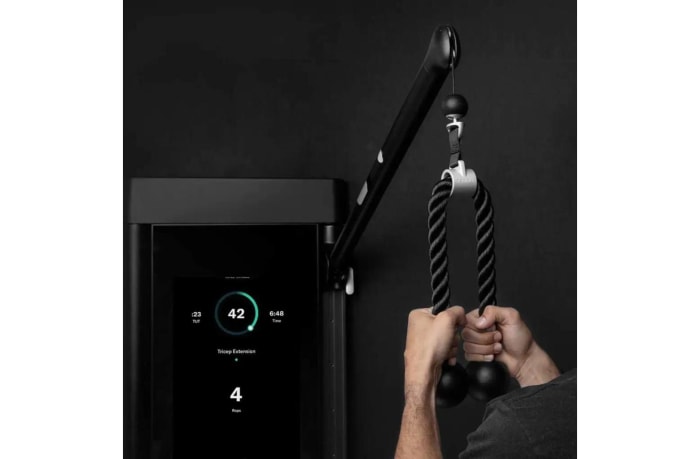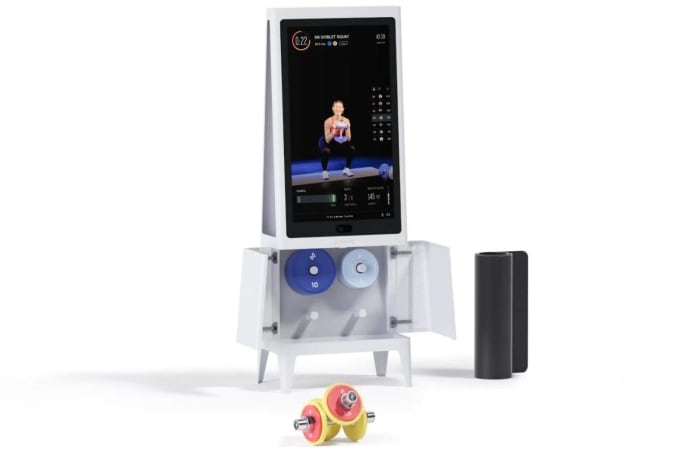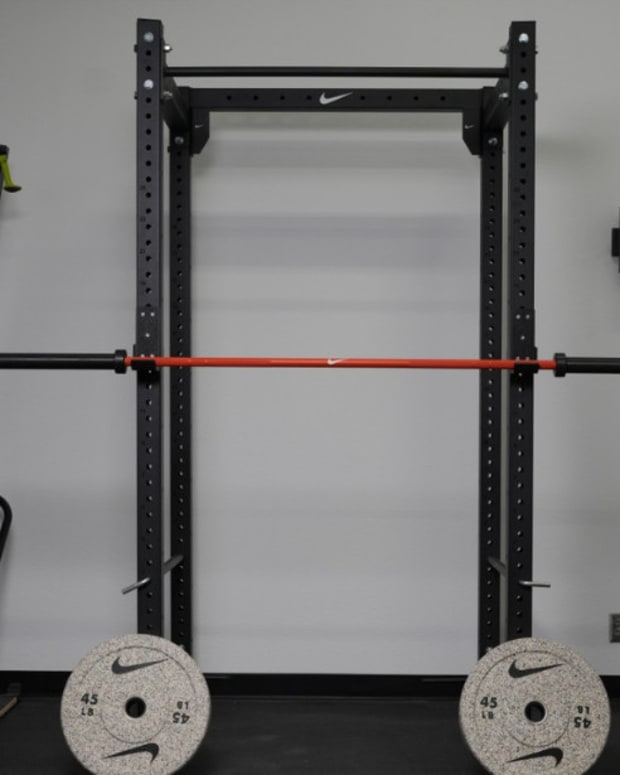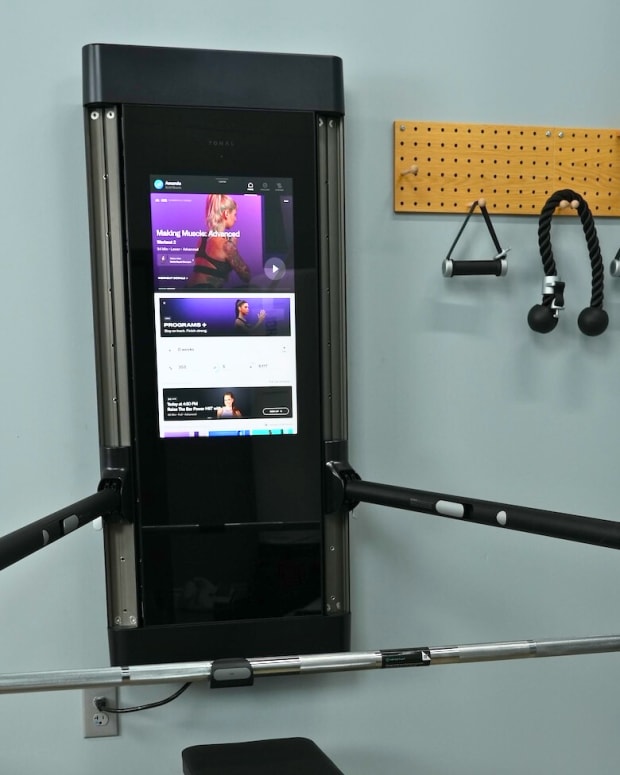The products featured in this article have been independently reviewed. When you buy something through the retail links on this page, we may earn commission at no cost to you, the reader. Sports Illustrated editorial staff are not involved in the creation of this content. Learn more here.
Tonal and Tempo are two of the most popular smart home gyms on the market, and for good reason—they both give the user a challenging, tech-powered workout from the comfort of home, in a smaller space that’s typically needed for home gyms.
Both have benefits and drawbacks depending on your goals, so they’re suited to different types of users. In this review, we’ll tell you everything you need to know to choose the best smart gym for you in 2024.
What Is a Smart Home Gym?
Smart home gyms combine technology and various types of in-home equipment to provide an interactive workout. Gone are the days of following YouTube or magazine workouts, hoping that you’re doing things correctly with what you have. Whether it’s Tonal, Tempo, Peloton, The Mirror or any of the other options on the market, smart home gyms have revolutionized home fitness by combining virtual workout instruction, technology and streaming classes to simulate personal training with a live instructor from your home.
Tonal and Tempo specifically focus on strength training. They rely on movement sensors to track and adjust your workout technique, provide varying resistance to accommodate myriad fitness levels, and offer lots of virtual workout classes to choose from.
What’s the Difference Between Tonal and Tempo?
While many smart gyms focus on cardiovascular work or use bodyweight training to improve your fitness levels, Tonal and Tempo both provide external resistance in the form of weight or cables.
Both track your workouts over time, sync with Bluetooth headphones, and offer subscriptions with both live and on-demand classes to follow. If you’re competitive, both options include a live leaderboard, so you can see how you stack up against your fellow exercisers.
Tonal is a wall-mounted device with adjustable cable arms and a large HD touchscreen that displays your workout instructor, workout stats and other pertinent data. It also features smart resistance, so the cables will automatically increase or decrease the weight you’re using to match your individual fitness level.
Tempo is very similar, though it uses free weights instead of cables, relying on adjustable dumbbells and barbells to provide resistance. Tempo is also unique in that it sells a unique “Move” option in addition to its wall-mounted “Studio” option. Tempo Move works with your TV and iPhone with Face ID, so if you don’t have the space for Tempo Studio, you can still enjoy a great workout.
We like that Tempo Studio is a free-standing device, and you can set it up anywhere. Tonal requires professional installation on a sturdy wall, which can be a pain if you ever move. Tempo’s “Move” edition is priced at a lower cost since it works with your TV and iPhone.
Specs at a glance
| Tonal | Tempo | |
|---|---|---|
Price | $3,495 | $2,495 |
Subscription fees | $49/month | $39/month |
Weight | 135 pounds | 100–190 pounds |
Size | 21.5 inches W x 50.9 inches H x 5.25 inches D | 72 inches H x 26 inches W x 16 inches D |
Screen size | 24 inches | 42 inches |
How Tonal Works
Tonal uses adjustable arms with attached cables to provide a full-body workout. Powered by electromagnetic resistance—no heavy metal plates required—Tonal’s cables allow you to use the machine in a variety of configurations. Resistance will automatically adjust to make sure you’re appropriately challenged, and if you’re struggling to complete a rep, Tonal’s “spotter” will temporarily lower the weight. You can also use “burnout,” which gradually reduces the weight in a set with a high number of repetitions, or “chains,” which mimics the weight drop feeling of using resting real chains on the group as you complete a rep.
The Tonal home gym also offers optional smart accessories, which are handles and cables that attach to the resistance arms. These accessories allow you to change your weights with the push of a button, and help track your movements and offer suggestions to improve your form. Of course, Tonal doesn’t replace a real-life trainer helping you work out, but it does attempt to correct your form. It has built-in sensors that track your movement and cable length 60 times per second, allowing it to virtually detect and correct how you’re moving. (This feature does require that you have an active subscription.)
Pros:
- Versatile, adjustable cable arms with smart resistance settings
- Form corrections and workout tracking
- Recorded workout stats mean you can track your progress over time.
- A wide variety of exercises, classes, and trainers to choose from
- Up to 100 pounds of resistance on each cable arm
- 24-inch HD Display screen
Cons:
- You need a lot of space (seven feet of wall and floor space) and sturdy walls to install the unit.
- To get the most out of Tonal, you really need the smart accessories, which cost an extra $495.
- You need to maintain an active monthly membership to enjoy the smart features, which will run you $59.95/month — though you can save unlimited user profiles.
How Tempo Works
Tempo Studio is a free-standing device that can be set up anywhere. The machine uses free weights to provide resistance, and 3D Vision technology to monitor your form, count your reps and provide real-time feedback during your workouts.
The starter package for the wall-mounted Tempo Studio edition starts at $2,495, but this option only includes two dumbbells and 75 pounds of total weight resistance. If you want more weight or barbells, you’ll need to upgrade to a premium package which provides more fitness equipment to use in your home workouts. The Plus package ($3,245) includes everything in the starter package, plus a barbell, two 25-pound plates, an adjustable bench, heart rate monitor and foam roller. Finally, the Pro package ($3,995) adds plate storage, a folding squat rack, two 45-pound plates and kettlebells. Tempo also offers the $495 “Move” edition as well. Rather than getting the full screen, you can simply hook up your iPhone to your TV with the Tempo Move Base, and the class will stream on your TV. Keep in mind that you will need a recent iPhone with Face ID for this to work.
Pros:
- Adjustable dumbbells with 3D Vision track your form
- Recorded workout stats mean you can track how you improve over time
- 42-inch HD display screen
- A wide variety of exercises, classes, and trainers to choose from
- Multiple packages to match your needs
Cons:
- Packages can get expensive depending on how many weight plates you’ll need - the base package only includes 75 pounds of total weight
- You need to be at least six feet away from the screen to have your movements monitored, so it requires a lot of open floor space
- You need to maintain a subscription, which costs $39/month.
Tonal vs. Tempo: Head to Head Comparison
Key tech
Both Tonal and Tempo are created for those who enjoy weight lifting, and they share much of the same tech.
- Our favorite features are: On-demand or live workout classes
- Live leaderboard during classes with other users
- Large, easy-to-read display screens
- Full-body workouts with a variety of classes, including strength, cardio, Pilates and yoga
- Sync with Bluetooth-enabled heart rate monitors
- Automatic rep counting
There are small features that differ, however. Tonal allows you to create your own workout with its “free workout” mode, which Tempo does not have. However, Tempo does provide real-time feedback during your workout set, while Tonal does not.
Equipment and smart accessories
Both options include a base package, which gets you most of what you need, but not everything. In fact, many internet reviewers say they wouldn’t recommend these products unless you’re going to upgrade and get the additional accessories.
With Tonal, you can purchase smart handles, a smart rope or smart bar, designed to integrate with Tonal’s digital weight system. These include buttons that allow you to switch the weight on or off during your set. Tonal’s smart accessories package also includes a bench, foam roller, and workout mat. When you add the accessories package, the whole thing will run you $3,990.
Tempo’s base package includes dumbbell handles, and 75 pounds of total plates. While this is plenty to get started, those who have been lifting for a while may quickly find they need more weight. Tempo’s higher-level packages include more plates (25 and 45 pound options), as well as a barbell, storage for your plates, foam roller, mat, and adjustable bench. The Pro Package, which includes all accessories, costs $3,995.
You can use either smart gym without the equipment, but it’ll be very limited and doesn’t support workout tracking.
Classes and personal training
Both Tonal and Tempo include on-demand classes and live sessions, in a wide variety of training styles. Whether you’re looking to tone and build muscle with weight training, crank up your heart rate with HIIT or improve your mobility with yoga or barre, you’ll find options on each platform.
Both companies have a big team of expert personal trainers leading the classes, so whichever you choose, you’re likely to find a trainer you enjoy following.
Size and installation
Both of these gyms feature a large digital screen, but that’s where the similarities end.
Tonal requires less space, but because it’s wall-mounted, it does require a sturdy wall to hang on. Tonal suggests a seven foot, 10-inch ceiling height, with at least seven feet in all directions to accommodate the arms and various exercises, though it can be used in a smaller area. Tonal requires professional installation, so when you move, you’ll need to buy the Move Kit ($500) and schedule another installation.
Tempo’s main feature is the fact that it doesn’t need to be wall mounted. If you want to put it away, or move it to a different room, it’s quite easy to transport. If you don’t want the full studio option, you can also choose Tempo Move, which works with your TV and compatible iPhones.
You’ll need to be a least six feet away for the sensors to track your movement, but you don’t need to mount it on a wall.
Subscriptions and pricing
Both gyms require active subscriptions to access classes, though when it comes to the total price, Tonal will make more sense for most people.
Tonal’s base cost is $3,495, and the accessories are an extra $495. The subscription is an extra $49/month. The Tonal unit is still usable without a subscription, but you can’t access any classes or tracking info.
Tempo’s base cost for the Studio model (the closest to Tonal) is $2,495, but this only includes 75 pounds of weights, and no bench. To match Tonal’s 200 pounds of resistance, you’d need the Plus or Pro package, which cost $3,245 and $3,995 respectively. A Tempo membership costs $39/month. Tempo’s weights are also usable without a subscription, though you won’t get any of the tech features that make it really worthwhile.
Tonal vs. Tempo: The Takeaway
Smart gyms aren’t cheap, but Tonal and Tempo are two solid options that will give you a full-body workout suitable for any fitness goal.
If you prefer to use cables, and have a sturdy wall, Tonal is a great option, especially for those who want to focus on building strength and muscle. The adjustable cable arms allow you to safely work with heavy resistance, even without a spotter.
If you can’t mount a Tonal or just prefer something you can move around and enjoy using free weights instead of cables, Tempo is probably your best choice. Either way, you’re sure to love your new smart gym and find an endless amount of workouts to keep you fit and healthy.
Tonal vs. Tempo FAQs
What's the main difference between Tonal and Tempo?
The biggest difference is how they operate. Tonal’s resistance is provided by cables and built into the machine, while Tempo uses dumbbells. Tonal is also more expensive (by about $1,000). Tonal has a manual mode, so can be used seamlessly without a monthly class subscription. Tempo is much more limited without a subscription. Tempo theoretically has unlimited resistance, since you can add weights to the external barbell—you just need to have access to as much weight as you want to lift. Tonal has a limited amount of resistance—100 pounds per cable arm. Tonal is more tech-savvy in the ways that it manipulates the magnetic resistance when you work out. Tempo is also more nimble—the mirror has its own stand, rather than attaching to wall studs, like Tonal.
Is Tonal or Tempo better?
Ultimately, there are fitness enthusiasts on both sides of the Tempo vs. Tonal aisle who claim that their preferred smart exercise mirror is the “best.” Those aforementioned differences are what will drive which you think of as “better.” Both are worthwhile additions to a home gym set-up.
Do Tonal and Tempo mirrors have built-in cameras?
Yes, Tempo has a 3D camera to track movement precision and reps in real time. Tonal instead uses sensors to track form and numbers, but also has a camera you can use when participating in live workout classes, for a more competitive, immersive experience.
Prices are accurate and items in stock at time of publishing.
